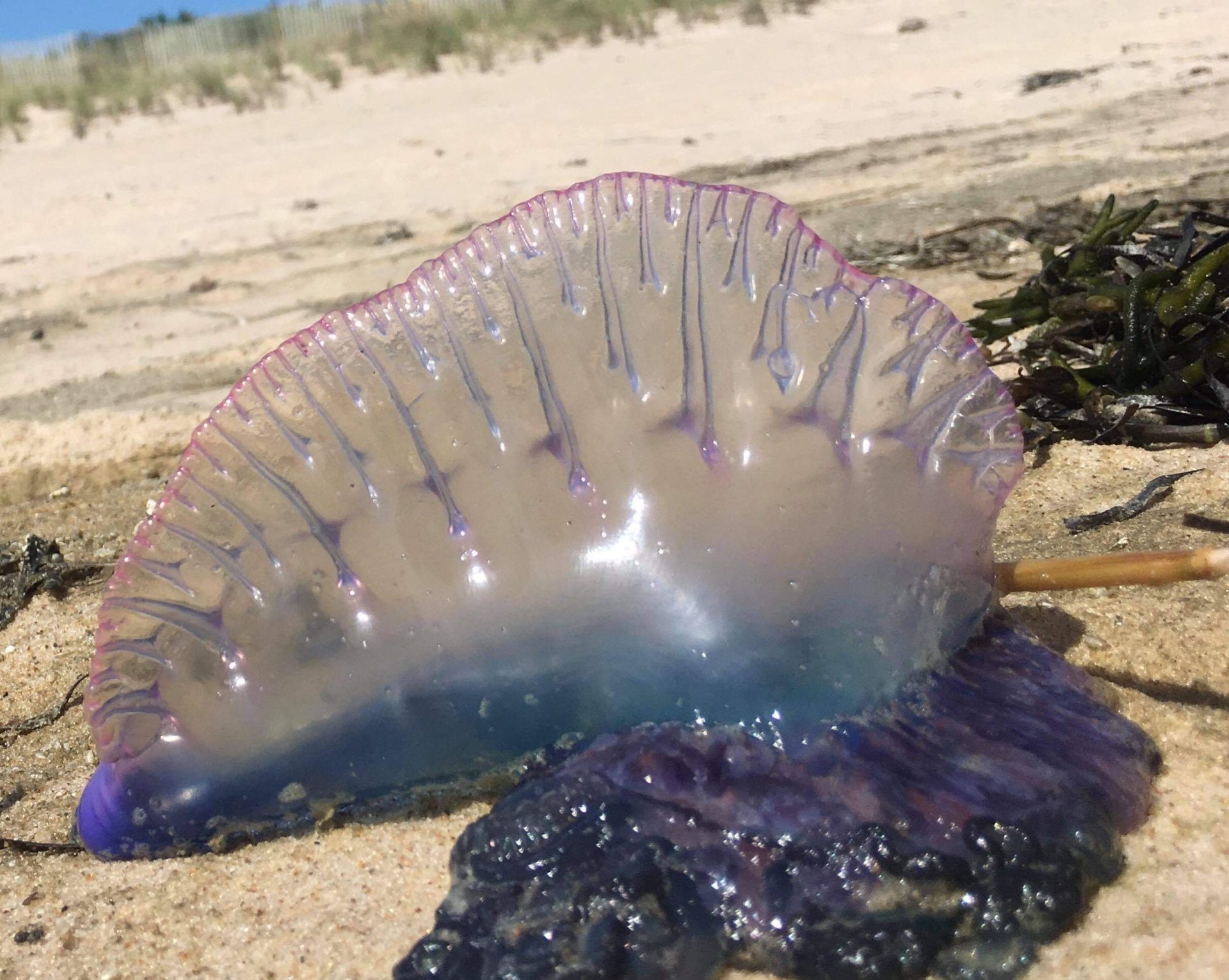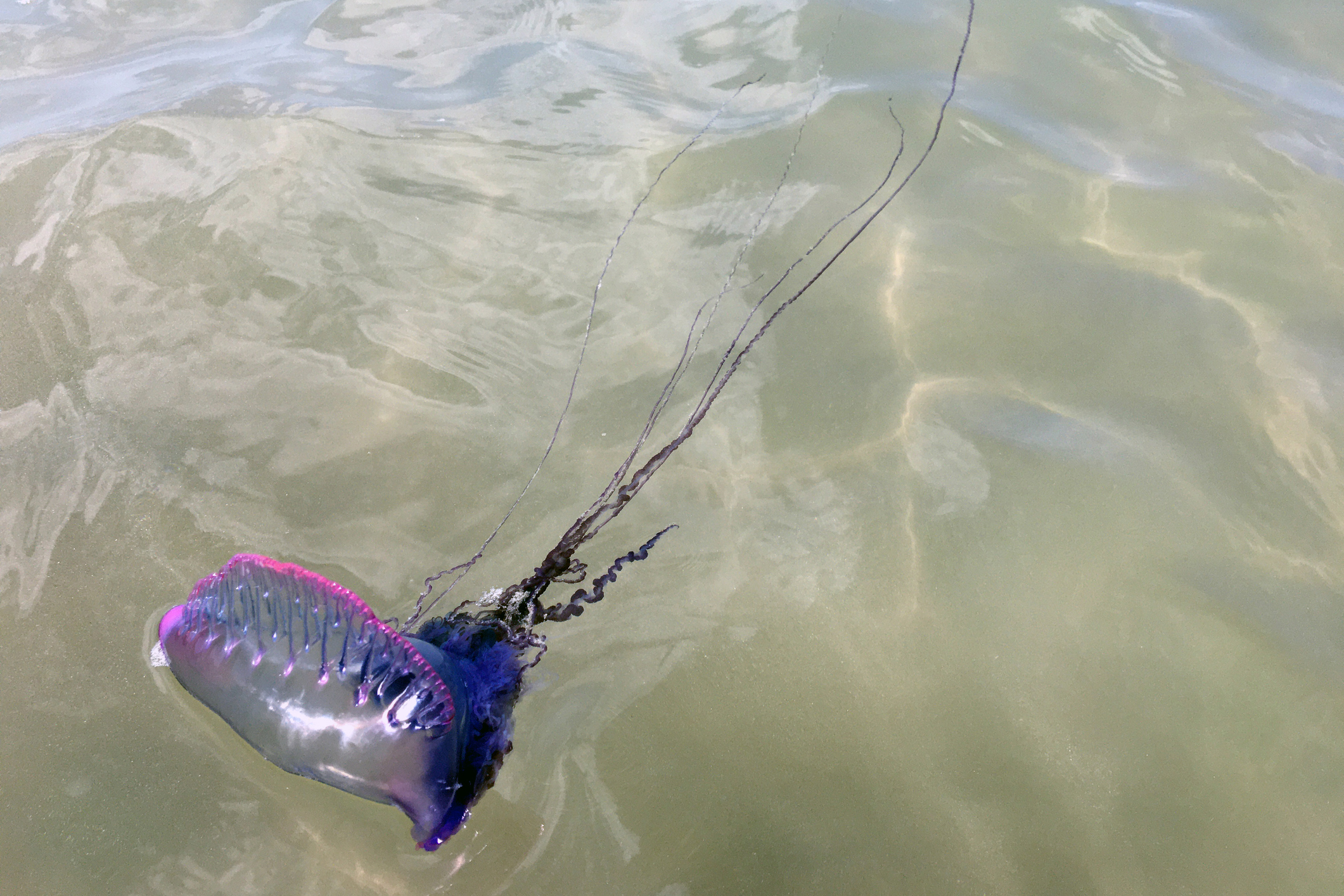Swimmers Beware: Dangerous Man o' War Spotted at Quogue Village Beach

On Wednesday, swimmers at Quogue Village Beach had to evacuate the water after head lifeguard Eric Buhl spotted a live Portuguese man o’ war in the water.
Recognizable by its translucent air sac in hues of blue, pink, and purple, the creature is beautiful to look at, but beware: It packs a venomous punch.
Man o’ war, which aren’t usually spotted until August when the waters warm up, have been making early appearances on Hamptons beaches this summer.
“Because it didn’t snow here all winter, the ocean closer to Long Island is warmer and warming up faster, and it’s bringing in Portuguese man o’ war,” said Greg Fothergill, a lifeguard at Westhampton Village Beach.
The man o’ war, found mostly in tropical oceans, prefer warmer waters. With the help of their sail-like floats, they get pushed into Long Island waters by warm currents.
“When we have really strong winds like we’ve had in the past couple of days, they get pushed to shore,” explained Fothergill, who said that he hasn’t seen any incidents of man o’ war stings in the water this summer. He has seen the creatures washed up on beaches, in which case they’re usually dead.
Even so, Fothergill recommends staying away.

“If [a man o’ war] is on the beach and dead, stay away and get a lifeguard to bury it,” says Fothergill, who advises beach goers to alert lifeguards right away if they get stung. A dead man o’ war can still sting days after its death, and even a detached tentacle can sting.
Named after the 18th century warship, the Portuguese man o’ war is a member of a jellyfish-like group of animals called siphonophorae. Unlike a jellyfish, which is an individual organism, a siphonophore is a colony of genetically identical parts called zooids that can’t survive on their own.
Men o’ war have purplish-blue tinted floats that can resemble the shape of an empanada and long, stringy tentacles that extend an average of 30 feet below the water surface. Their long tentacles are used to reel in prey—kind of like a frog’s tongue extension.
But don’t be fooled by their visual allure, the man o’ war can deliver excruciatingly painful stings to humans.
Man o’ war tentacles dispatch venom that paralyzes and kills small fish. While stings are not deadly to humans, they can leave spidery rashes that can persist for up to six weeks.
There is scientific debate over what substances work best to treat man o’ war stings. Lifeguards may treat a sting with vinegar. There is a general consensus against rinsing a man o’ war sting with fresh water, which may trigger the release of more venom.
A man o’ war can deflate and submerge under the surface of the water to avoid predators. Beware in the water, as a man o’ war can resemble a floating plastic bag.
So, if you run into one of these beautiful creatures on the beach, look but don’t touch.









